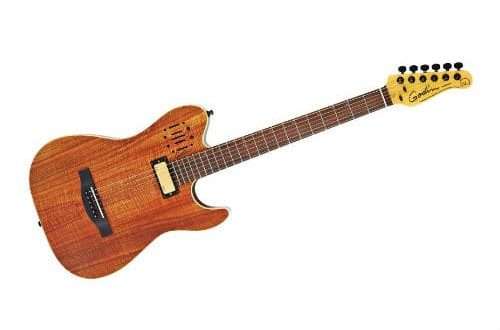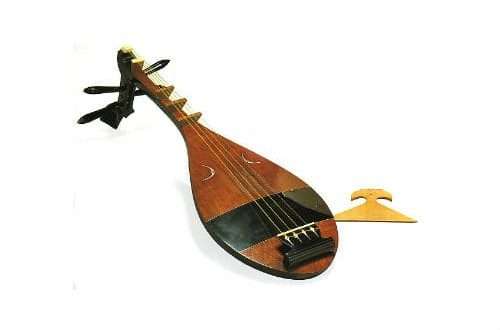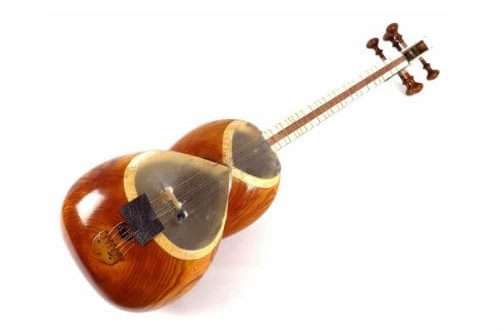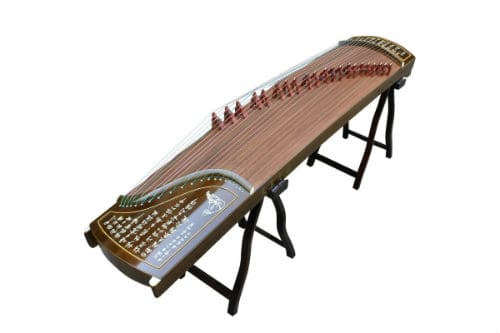
Koto: description of the instrument, composition, history, types, use, playing technique
In Japan, the unique plucked instrument koto has been used since ancient times. Its other ancient names are so, or Japanese zither. The tradition of playing the koto goes back to the history of the famous Japanese noble family Fujiwara.
What is koto
It is believed that the musical instrument was adopted by the Japanese from Chinese culture, which has a similar qin. Koto is a famous national instrument of Japan. Often the music is accompanied by the playing of the shakuhachi flute, the rhythm is supported by the tsuzumi drums.

There are similar instruments in different cultures of the world. In Korea, they play the old komungo, in Vietnam, danchan is popular. Distant relatives include the plucked kantele from Finland and the traditional Slavic gusli.
Tool device
For a long time of existence, the design has not actually changed. Paulownia, a tree common in the east, is used for manufacturing. It is high-quality wood and the skill of the carver that determine the beauty of the Japanese koto. Surfaces are usually not decorated with additional ornaments.
The length reaches 190 cm, the deck is usually 24 cm wide. The instrument is quite massive and has a serious weight. Most varieties are placed on the floor, but some can fit on your knees.
Interestingly, the Japanese associated deku with traditional mythology and religious beliefs, thereby giving it animation. Deca is compared to a dragon lying on the shore. Almost every part has its own name: the top is associated with the dragon’s shell, the bottom with its belly.
Strings have a unique name. The first strings are counted in order, the last three strings are named virtues from Confucian teachings. In ancient times, the strings were made of silk, now musicians play on nylon or polyester-viscose.
Holes are made in the deck, thanks to them it is easy to change the strings, the resonance of the sound improves. Their shape depends on the type of koto.
To extract the sound, special tsume picks from an elephant tusk are used. Nozzles are put on fingers. With their help, a rich and juicy sound is extracted.
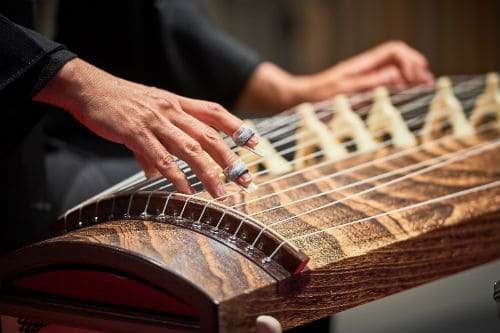
History
Coming from China during the Nara period, the instrument quickly gained popularity among the Japanese nobility. Characteristic of gagaku music performed by palace orchestras. Why the Chinese qixianqin received the correspondence “koto” in Japanese is not known for certain.
Gradually, it spread and became mandatory for education in aristocratic families. It was most popular in the Heian era, becoming a means of entertainment and pastime in the elite Japanese society. Over the years, the instrument has become more widespread and popular. The first works appeared that were not written for court performance.
In the subsequent Edo period, various styles and genres of play were born. In the dominant court style, sokyoku, works were divided into subgenres – tsukushi, intended for performance in aristocratic circles, and zokuso, music of amateurs and commoners. Musicians study technique in the three main schools of Japanese zither playing: the Ikuta, Yamada and Yatsuhashi schools.
In the nineteenth century, the sankyoku genre became popular. Music was performed on three instruments: koto, shamisen, shakuhachi. Musicians often try to combine the Japanese zither with Western modern instruments.
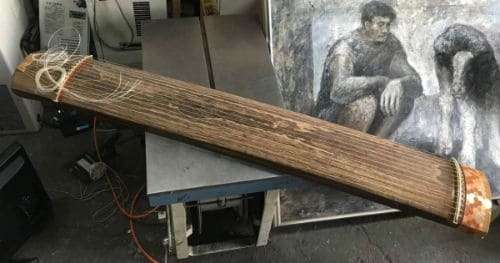
Varieties
Types are often determined by external features: the shape of the deck, holes, tsume. The classification takes into account in which genres of music or schools the instrument was used.
During the ancient gagaku genre, the gakuso type was used; its length reaches 190 cm. In the classical traditional genre of sokyoku, which has almost disappeared in our time, two main types were used: tsukushi and zokuso.
Based on the zokuso, Ikuta’s koto and Yamada’s koto (created in the seventeenth century by musicians Ikuta and Yamada Kangyo, respectively) were created. Ikuta’s koto traditionally had a soundboard 177 cm long, Yamada’s koto reaches 182 cm and has a wider sound.
Shinsō, the modern varieties of koto, were invented by the talented musician Michio Miyagi in the twentieth century. There are three main types: 80-string, 17-string, tanso (short koto).
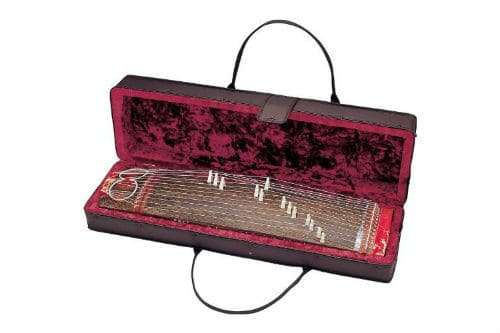
Using
The Japanese zither is used both in traditional schools and genres and in contemporary music. Musicians study at the main performing schools – Ikuta-ryu and Yamada-ryu. The zither is combined with both traditional and modern instruments.
The most commonly used are the 17-string and the short koto. Their design has less cumbersome parameters, unlike the others. The instruments are easy to move and transport, and the tanso can even be placed on your lap.
Play technique
Depending on the genre and school, the musician sits cross-legged or on his heels at the instrument. Let’s raise one knee. The body of the body is placed at a right angle or diagonally. At concerts in modern halls, the koto is mounted on a stand, the musician sits on a bench.
Bridges – kotoji – are pre-tuned to create the desired keys. Kotoji were made from elephant tusk. The sound is extracted with the help of overhead nozzles – tsume.



